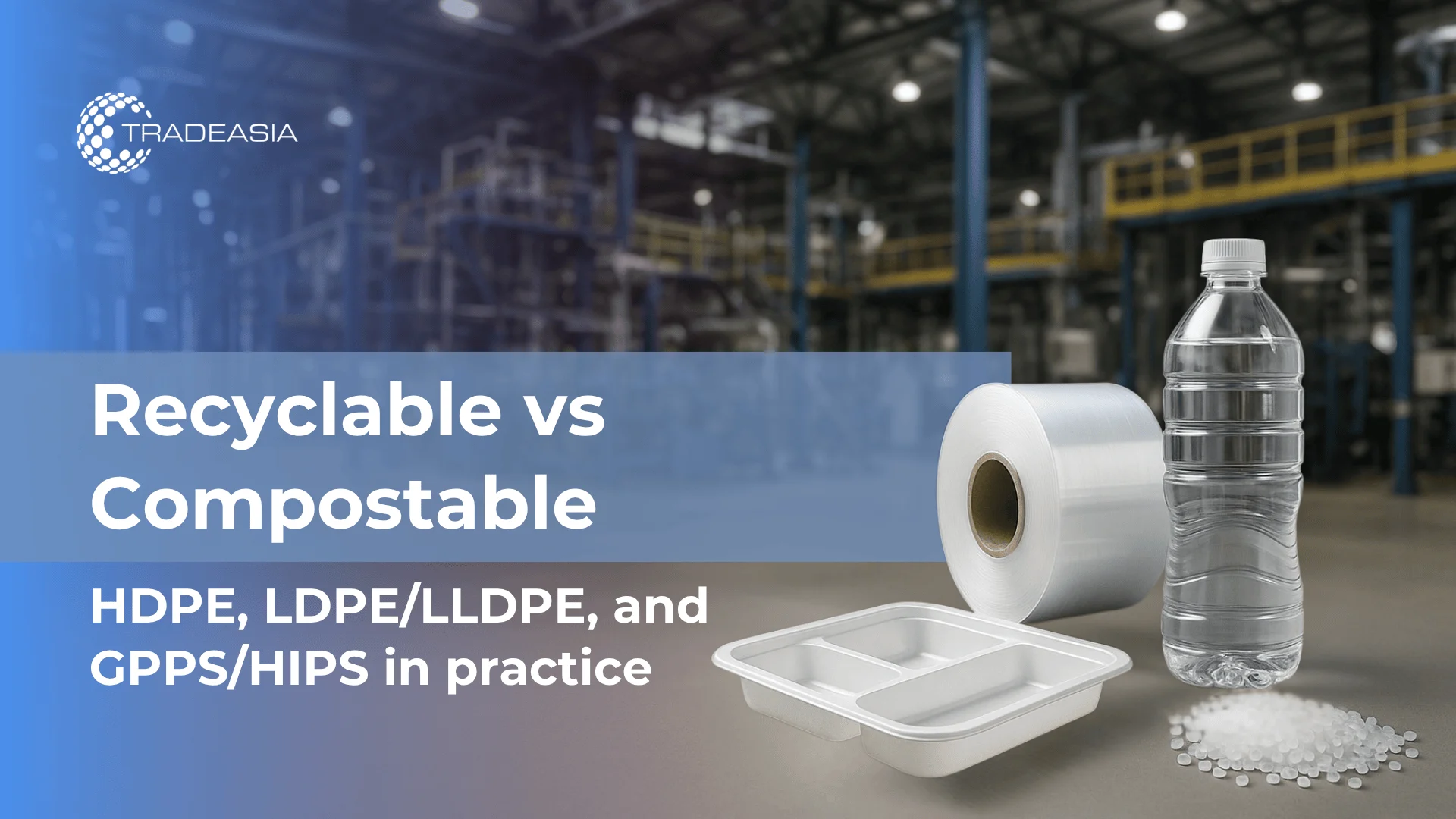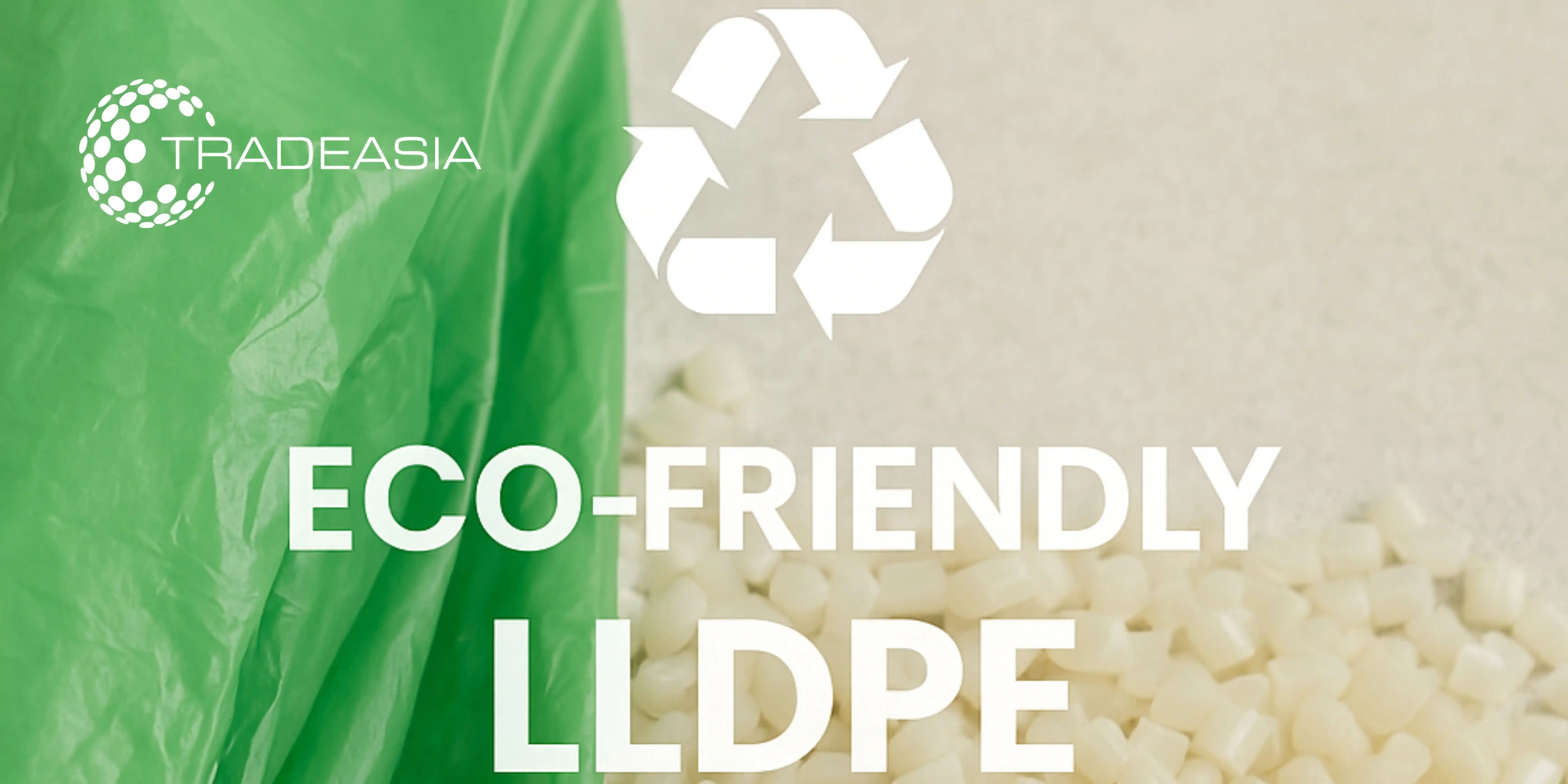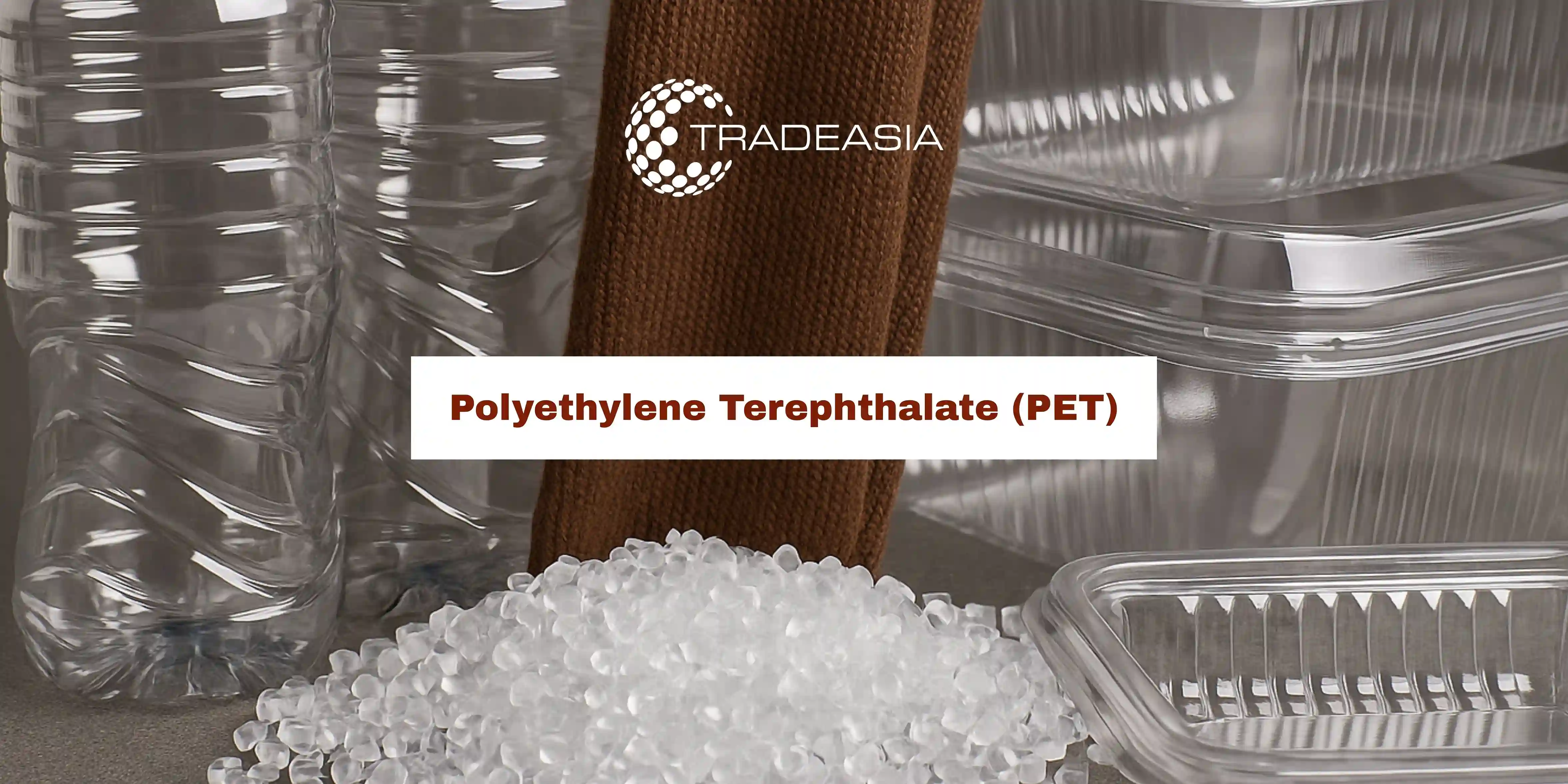“Biobased” does not automatically mean “compostable,” and many high-volume industrial resins are neither—they are recyclable instead. This article explains the difference between biobased, compostable, and recyclable, outlines what certifications (EN 13432, ASTM D6400) actually cover, and shows where three widely used raw materials in Tradeasia’s portfolio—HDPE, LDPE/LLDPE, and GPPS/HIPS—fit in today’s circular strategies.
1. Biobased vs Compostable vs Recyclable
Biobased refers to feedstock origin (wholly or partly from biomass). It says nothing about end-of-life. Compostable means a material can biodegrade and disintegrate under controlled conditions within set timeframes—verified by standards like EN 13432 (CEN) and ASTM D6400. See: European Bioplastics Docs and AstmStandard Specification for scope and pass/fail criteria.
By contrast, recyclable focuses on recovery pathways and system performance (collection, sorting, reprocessing, and markets). Governance for plastics recovery/recycling is framed by ISO 15270.
A common misconception: “biobased” equals “compostable.” In reality, many biobased grades are recyclable (or landfilled/incinerated) rather than compostable; likewise, some fossil-based polymers (e.g., PBAT) can be certified compostable when properly formulated and tested.
Internal context (Tradeasia products): buyers looking for commodity resins with strong recycling routes typically evaluate HDPE, LDPE/LLDPE, and GPPS/HIPS first.
2. HDPE: highly recyclable, bio-attributed options (not compostable)
Where it shines. HDPE is rugged, chemically resistant, and supported by mature mechanical recycling worldwide (rigid containers, closures, pipes). It is not compostable, but can be produced as bio-attributed HDPE via mass-balance—important for brands seeking lower fossil dependency without changing the polymer family.
Design for recycling. Keep structures mono-material where possible; avoid incompatible barriers and use recycle-compatible pigments/labels. Guidance from RecyClass helps converters update specs: Resyclass' Online Tool.
When to deploy. Use HDPE where durability, chemical resistance, and established PCR streams matter; position compostables only when there is an end-of-life access to industrial composting and a clear functional benefit.
HDPE product page at Plastradeasia Chemtradeasia: Plastradeasia Leading Supplier High Density Polyethylene (HDPE) - Plastradeasia
3. LDPE/LLDPE: flexible mono-material design and recycling reality
Where it shines. LDPE and LLDPE dominate flexible packaging (films, liners, pouches) and can be engineered as mono-material PE laminates for improved recyclability. They are not compostable, but they can incorporate PCR or bio-attributed PE via mass balance.
Key levers. Sealability vs barrier trade-offs, ink/adhesive compatibility with PE recycling, and downgauging for carbon reduction. End-market acceptance hinges on film cleanliness and consistent mechanicals.
When to deploy. Use PE when collection/sorting of films exists (or is being built) and when pouch/film performance can be met without complex multi-polymers that harm recycling.
See LDPE and LLDPE product page at Plastradeasia by Tradeasia website.
4. GPPS/HIPS: when chemical recycling makes sense
Where they shine. GPPS (general-purpose polystyrene) and HIPS (high-impact PS) offer clarity/rigidity and impact-modified toughness, respectively—prevalent in disposables, trays, and appliance parts. They are not compostable.
Recycling routes. Mechanical PS recycling is more sensitive to color and contamination, but chemical recycling (e.g., depolymerization back to styrene monomer) can recover quality from mixed or colored streams when scale and economics align—complementary to mechanical routes outlined in ISO 15270.
When to deploy. Use GPPS/HIPS where optical and mechanical properties are critical, with take-back or qualified recycling partners positioned to handle post-industrial/post-consumer streams.
GPPS product page at Plastradeasia by Tradeasia website: General-Purpose Polystyrene (GPPS) Supplier | 9003-53-6 - Plastradeasia
5. Claims, certifications, and mass-balance: how to stay compliant
Compostable claims: validate against EN 13432 (EU) or ASTM D6400 (US). These standards define biodegradation, disintegration, ecotoxicity, and heavy-metal limits.
Recyclability claims: align with ISO 15270 concepts and Design for Recycling guidance (e.g., RecyClass checklists for rigid/flex).
Environmental labeling: follow truthful, verifiable statements consistent with recognized guidance (e.g., ISO 14021 for self-declared claims).
Mass-balance / bio-attribution: when using bio-attributed PE/PP/PS, reference the certification scheme (e.g., ISCC PLUS) in customer documentation and explain what is and isn’t covered.
Find TDS/ MSDS and compliance letters in the Plastradeasia by Tradeasia Download Center: Here
6. Buyer checklist and conclusions
- Define the goal: compostability (with actual access to industrial composting), or recyclability (fit existing recovery systems).
- Choose the right family: HDPE and LDPE/LLDPE for established recycling routes; GPPS/HIPS where properties demand PS—consider chemical recycling partnerships.
- Design for end-of-life: simplify structures, specify compatible inks/adhesives, and document claims with the correct standard (EN 13432/ASTM D6400 vs ISO 15270).
- Communicate clearly: distinguish biobased from compostable and recyclable in technical datasheets and marketing.
If you need help aligning resin choice, certification language, and packaging specs, Plastradeasia by Tradeasia's technical team can share resin data and documentation paths for HDPE, LDPE/LLDPE. Download specs here: Download Center — then contact us for a project review: Contact Form.



Leave a Comment